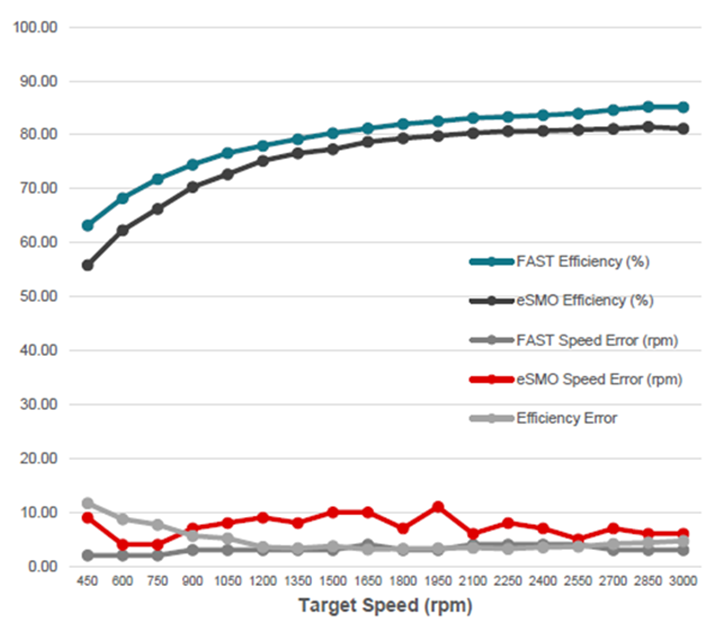SLAAEO7 September 2024 DRV7308 , DRV8847 , IWRL6432 , TMP61 , TMS320F2800137
- 1
- Abstract
- Trademarks
- 1 Introduction
- 2 Power Factor Correction (PFC)
- 3 Flyback Auxiliary Power Supply
- 4 Motor Controller Based on C2000 DSP and FAST Observer
- 5 GaN IPM DRV7308 for High-Efficiency Fan Drive
- 6 Electronic Expansion Valve (EEV)
- 7 DSP With Edge AI Feature
- 8 Temperature Sensor
- 9 mmWave Radar
- 10References
4 Motor Controller Based on C2000 DSP and FAST Observer
The C2000 series of microcontrollers, designed by Texas Instruments specifically for real-time control applications, is a C28x-based 32-bit microcontroller. This series of MCUs features a high-performance core and application-optimized peripherals, making them ideally suited for advanced processing applications such as motor control, digital power, position sensing, and automotive radar. They boast a high-performance core, abundant integrated peripherals, and enhanced security features.
The Flux, Angle, Speed, and Torque (FAST) Observer, another offering from Texas Instruments, is a motor control observer designed for sensorless field-oriented motor control. Embedded within, it enables designers to identify, debug, and fully control any type of three-phase, variable-speed, sensorless, synchronous, or asynchronous motor control system. The FAST Observer accurately estimates the motor's flux, angle, speed, and torque without physical sensors, enabling sensorless control. Through advanced algorithms and models, the FAST Observer provides high-precision motor state estimation, enhancing control accuracy.
TIDM-02010 is a dual motor control with digital interleaved PFC reference design for HVAC and air Conditioner, which demonstrates the capability of a single DSP chip to simultaneously control an interleaved PFC and dual motors. The following diagram, based on the TIDM-02010 design, compares the efficiency and speed error between the FAST Observer and the eSMO Observer. It can be observed that the FAST Observer offers an efficiency improvement of over 5% compared to eSMO, with an even more significant 10% efficiency gain at low speeds, which is particularly crucial for air conditioners as they operate at low speeds for the majority of their operational time.
 Figure 4-1 Motor Drive Efficiency Comparison: Fast vs eSMO
Figure 4-1 Motor Drive Efficiency Comparison: Fast vs eSMO